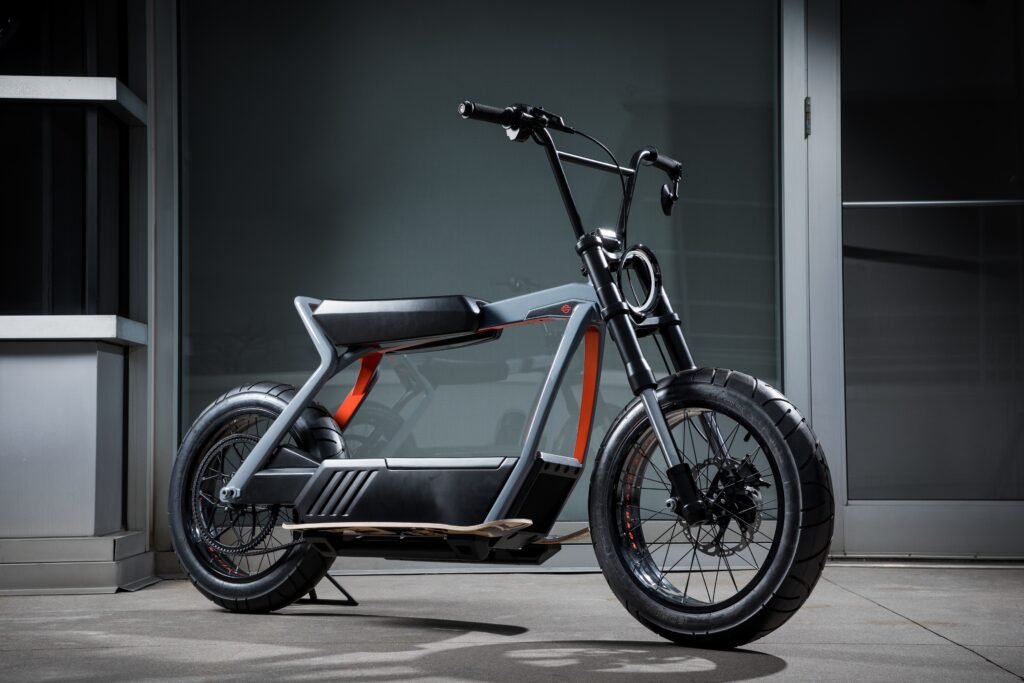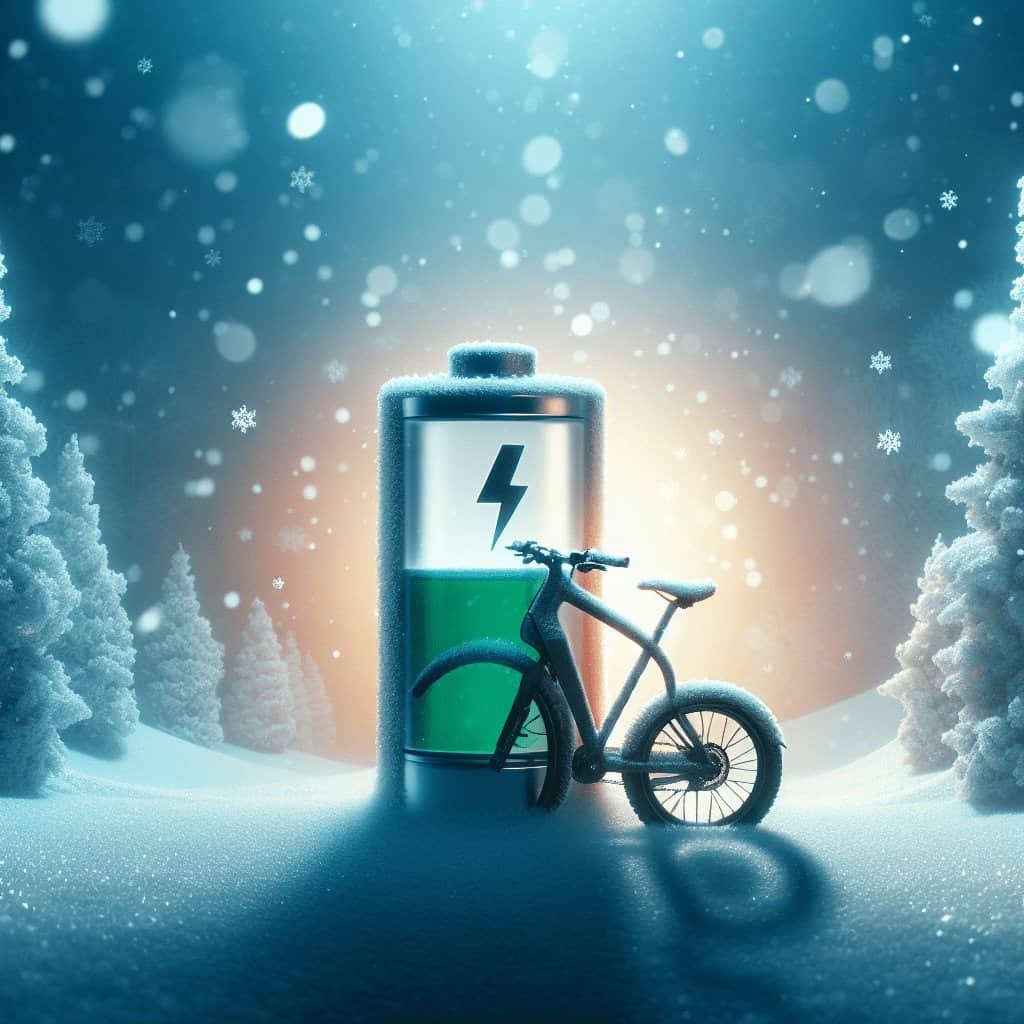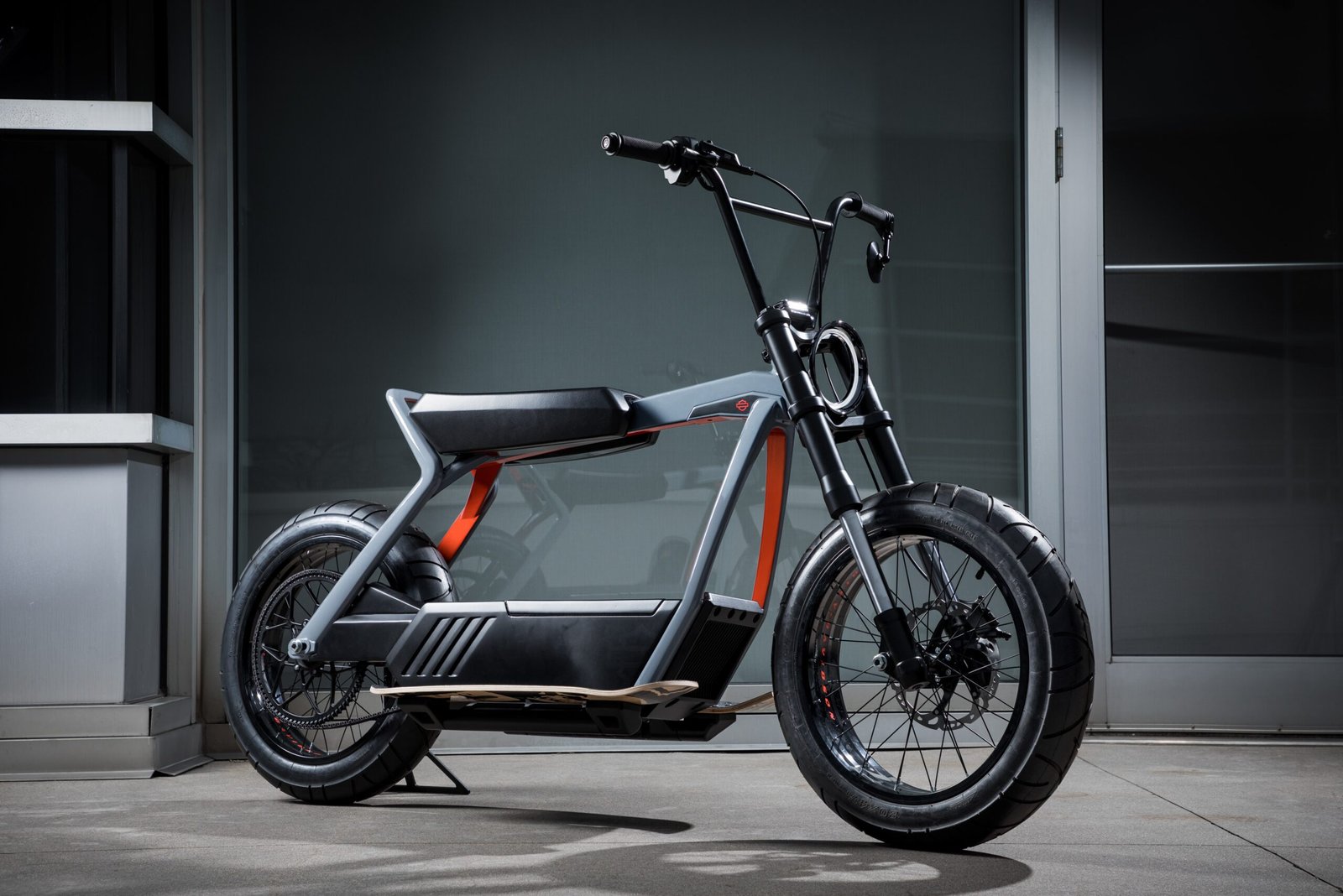Have you ever wondered how electric bikes fare in cold weather? With the increasing popularity of electric bikes, it’s important to understand their performance in various climates. One crucial concern is how cold temperatures impact the battery life of these bikes. In this article, we will explore the effects of cold climates on electric bikes and whether battery life is affected. So, if you’re contemplating using your electric bike during the winter months, read on to discover how it handles in cold conditions and what you need to know to optimize its performance.

Battery Performance in Cold Climates
Temperature’s Impact on Battery Life
When it comes to electric bikes, one of the main concerns riders have in cold climates is how it affects the battery life. Batteries are sensitive to temperature changes, and extreme cold can significantly impact their performance. The chemical reactions within the battery that produce and store energy slow down in low temperatures, leading to reduced capacity and power output. This means that you may not be able to ride as far or as fast on a single charge when the temperature drops.
Capacity Loss in Cold Weather
In addition to the reduced power output, cold weather can also lead to a loss of overall battery capacity. This means that even after the battery warms up, it may not be able to store as much energy as it did before. The capacity loss is typically temporary and can be restored once the battery is brought back to warmer temperatures. However, it is important to keep in mind that repeated exposure to cold weather can have a cumulative effect on the battery’s overall capacity over time.
Battery Warming Systems
To counter the negative effects of cold weather on battery performance, some electric bikes come equipped with battery warming systems. These systems use insulation and heating elements to keep the battery at an optimal temperature, even in freezing conditions. By maintaining a consistent temperature, the battery warming systems can help mitigate the loss of power output and capacity that occurs in cold weather. If you frequently ride in cold climates, investing in an electric bike with a battery warming system can greatly improve your riding experience.
Preventing Battery Freezing
Extreme cold temperatures can pose the risk of freezing the battery, which can cause irreversible damage. It is important to take precautions to prevent the battery from freezing during winter rides. One way to do this is to keep the battery indoors when not in use, in a temperature-controlled environment. If you need to store your electric bike outdoors during the winter, consider using a battery cover or insulation to provide additional protection against the cold. Additionally, avoid leaving the bike exposed to extreme cold for extended periods of time, as this can increase the risk of freezing.
Motor Performance in Cold Climates
Cold Start Challenges
In cold climates, electric bike motors may face challenges when starting up. The lubricants used in the motor can thicken in low temperatures, making it difficult for the motor to spin freely. This can result in a slower and less responsive start, which can be frustrating for riders. To overcome this challenge, it is recommended to warm up the motor before starting your ride. Letting the bike sit indoors or in a warm area for a few minutes can help ensure that the motor is ready to perform optimally.
Motor Efficiency and Power Output
Similar to the battery, the motor’s efficiency and power output can be affected by cold temperatures. As the temperature drops, the motor may have to work harder to maintain the same level of performance. This can lead to increased energy consumption and reduced overall efficiency. To maximize motor performance in cold climates, it is advisable to ride at a slightly lower power level to minimize strain on the motor and prolong battery life.
Motor Lubrication and Cold Weather
Cold weather can also impact the effectiveness of motor lubrication. As temperatures decrease, the lubricant can become thicker and less fluid. This can result in increased friction and wear on the motor components, potentially reducing its lifespan. Regular maintenance and lubrication checks are crucial to ensure that the motor is properly lubricated, especially in cold climates. Using lubricants specifically designed for low temperatures can help maintain optimal motor performance and prevent premature wear.
Tire Traction and Grip
Effect of Cold Temperatures on Tire Performance
Tires play a vital role in maintaining traction and grip, especially in cold climates where road conditions can be slippery. When temperatures drop, tire rubber tends to harden, which can decrease overall traction. Reduced traction can affect the bike’s stability and handling, making it more difficult to maneuver on icy or snowy surfaces. It is important to be aware of this potential loss of traction and adjust riding techniques accordingly to stay safe on the road.
Choosing Winter Tires for Electric Bikes
Investing in appropriate winter tires is essential for electric bike riders in cold climates. Winter tires are specifically designed to perform well in low temperatures and maintain better grip on slippery surfaces. These tires have a unique tread pattern and rubber compound that helps improve traction on wet, icy, or snowy roads. When selecting winter tires for your electric bike, consider factors such as tread design, tire width, and the specific weather conditions you are likely to encounter. It’s always a good idea to consult and seek recommendations from knowledgeable bike shops or experts to ensure that you choose the most suitable winter tires for your electric bike.
Additional Traction Aids
In addition to using winter tires, there are other traction aids available that can further enhance grip in cold climates. Tire chains and studs, for example, can provide additional traction on icy or snowy surfaces. These accessories attach to the tires and help improve traction by digging into the surface. However, it’s important to note that traction aids like tire chains and studs may affect the ride quality and handling characteristics of the bike. It’s advisable to practice and familiarize yourself with the bike’s behavior when using these traction aids before riding in challenging conditions.
Handling and Stability
Effect of Cold Temperatures on Bike Mechanics
Cold temperatures can have varying effects on different bike mechanics, ultimately impacting handling and stability. Metal components, such as frame and suspension parts, can become stiffer and less responsive in colder conditions. This can result in a slightly different feel when riding your electric bike in cold climates. It’s important to be aware of these potential handling changes and adjust your riding technique accordingly.
Braking and Suspension Performance in Cold Weather
The effectiveness of brakes and suspension systems can also be affected by cold weather conditions. Brake pads may take longer to warm up and reach their optimal operating temperature, resulting in slightly reduced braking performance at the beginning of rides. Suspension systems may also experience decreased responsiveness due to increased stiffness in colder temperatures. Adjusting your braking distance and being cautious with sudden stops can help compensate for the potential changes in braking performance. Similarly, it is advisable to approach bumps or obstacles with slightly reduced speed to account for any decrease in suspension responsiveness.
Weight Distribution and Balance
In cold climates, it is important to maintain proper weight distribution and balance on your electric bike. When riding on slippery surfaces, such as ice or snow, weight distribution plays a crucial role in stability. Keeping your weight centered and evenly distributed between the front and rear wheels can help prevent skidding and improve overall control. It’s recommended to practice and get familiar with the sensation of riding on slippery surfaces, adjusting your body position and weight distribution accordingly.
Adjusting Riding Techniques
To ensure optimal handling and stability in cold climates, it may be necessary to adjust your riding techniques. Slowing down and taking turns at a more gradual and controlled pace can significantly improve grip and stability. Avoid sharp or sudden movements, as they can destabilize the bike on slippery surfaces. Maintaining a safe distance from vehicles and other obstacles is crucial, as it allows for better reaction time and minimizes the risk of accidents. By adapting your riding style to the conditions, you can enjoy a safer and more enjoyable ride in cold climates.

Winter Maintenance Tips
Battery Maintenance
Proper battery maintenance is essential for optimal performance and longevity, especially in cold climates. Store your electric bike’s battery in a dry, temperature-controlled environment when not in use. Avoid exposing the battery to extreme cold or damp conditions, as this can lead to reduced performance and potential damage. Regularly check the battery connections to ensure they are clean and well-secured. If battery performance seems to be decreasing significantly, consider contacting a professional for a battery health check or possible replacement.
Motor Care
Regular motor care is crucial to keep your electric bike running smoothly in cold climates. Ensure that the motor is properly lubricated, using lubricants suitable for low temperatures. Clean the motor regularly to remove any dirt or debris that can affect its performance. If you notice any unusual noises or vibrations coming from the motor, it’s important to have it inspected by a professional to prevent further damage.
Tire Maintenance
Maintaining proper tire pressure is crucial for optimal traction and performance in cold climates. Cold temperatures can cause tire pressure to decrease, so it’s important to regularly check and adjust tire pressure as needed. Additionally, inspect the tires for any signs of wear or damage, as this can affect their ability to grip the road. If you are using winter tires, ensure that the tread depth is within the recommended range for optimal performance.
Cleaning and Lubrication
Regular cleaning and lubrication of various bike components are essential for maintaining performance and prolonging their lifespan. Clean your electric bike after each ride to remove any dirt, salt, or other debris that can accumulate on the frame, chain, and other parts. This helps prevent corrosion and damage caused by exposure to cold and wet conditions. Additionally, regularly lubricate the chain and other moving parts with appropriate lubricants to ensure smooth operation and reduce wear.
Safety Precautions for Cold Weather Riding
Accelerating and Decelerating Safely
In cold climates, it’s important to adjust your acceleration and deceleration techniques to ensure safety. Gradually increase your speed when starting from a stop to avoid wheel spin and potential loss of control. Similarly, when decelerating or coming to a stop, give yourself plenty of time and space to slow down, especially on icy or snowy surfaces. Smooth and controlled acceleration and deceleration are key to maintaining stability and preventing accidents in cold weather conditions.
Braking Techniques for Slippery Surfaces
Braking on slippery surfaces requires special attention and technique to maintain control. When braking on icy or snowy roads, apply gentle and gradual pressure to avoid locking up the wheels and skidding. Use both the front and rear brakes in equal measure to distribute the braking force and prevent imbalance. Additionally, consider pumping the brakes if you encounter icy patches or if you need to stop more quickly. Practicing and familiarizing yourself with these braking techniques in a controlled environment can greatly improve your safety on the road.
Avoiding Icy and Snowy Conditions
The best way to stay safe while riding in cold weather is to avoid riding in icy or snowy conditions altogether. If the road conditions are hazardous due to ice or snow, it is advisable to postpone your ride until the conditions improve. Pay attention to weather forecasts and road condition updates to make informed decisions about when and where to ride. If you must venture out in cold and potentially dangerous conditions, take extra precautions, ride at a slower pace, and remain vigilant.

Comparison with Traditional Bicycles
Advantages of Electric Bikes in Cold Weather
Electric bikes offer several advantages over traditional bicycles when it comes to riding in cold climates. The motor assistance provided by electric bikes can help overcome the challenges of starting from a stop on slippery surfaces. The extra power allows for easier acceleration and reduces the risk of slipping or losing control. Additionally, electric bikes often have wider tires and more stable frames, improving overall stability and grip in icy or snowy conditions. The ability to ride at a lower effort level can also reduce the risk of getting fatigued and losing control in cold weather.
Disadvantages of Electric Bikes in Cold Weather
While electric bikes have their advantages, there are also some disadvantages to consider when riding in cold climates. The battery performance can be affected by the low temperatures, leading to reduced capacity and power output. This means that riders may have to limit their distances or adjust their riding habits to conserve battery life. Additionally, the added weight of the motor and battery can make electric bikes slightly less maneuverable and more challenging to handle on slippery surfaces. Riders should be aware of these factors and take necessary precautions to ensure a safe and enjoyable ride in cold weather.
Conclusion
Electric bikes can handle well in cold climates, but it’s important to understand the potential effects of cold weather on battery performance, motor efficiency, tire traction, and bike handling. By taking the necessary precautions, including using battery warming systems, choosing appropriate tires, adjusting riding techniques, and maintaining regular winter maintenance, you can enjoy the benefits of electric bike riding in cold weather conditions. The advantages of electric bikes, such as motor assistance and improved stability, often outweigh the disadvantages when it comes to riding in cold climates. As long as you prioritize safety and make informed decisions about when and where to ride, electric bikes can offer a reliable and enjoyable means of transportation in all seasons.


